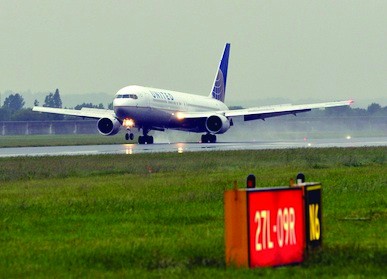Transport secretary Patrick McLoughlin is due to appear today before the Transport Select Committee and is likely to face questions over the disruption to flights at UK airports last Friday.
The disruption was caused by a computing malfunction at National Air Traffic Services (NATS) Swanwick centre, which lead to flights being grounded and passengers facing delays and cancellations.
Saturday saw Heathrow urging passengers to check with their airline before travelling to the airport and further warned that flights would be cancelled due to aircraft and crew being ‘out of position’.

It was widely reported over the weekend that McLoughlin would receive an interim report on Friday’s event prior to this afternoon’s meeting. NATS, the air traffic navigation services company, and the UK Civil Aviation Authority (CAA) announced today that they are establishing an independent inquiry to investigate the root causes of Friday’s incident and NATS’ handling of the incident in relation to minimising disruption without compromising safety.
Viewers of yesterday’s Andrew Marr show on BBC1 would have witnessed the business secretary, Vince Cable, criticise the lack of investment at NATS, saying the organisation used ‘very ancient computers which then crash’, adding that this was a consequence of restricting large-scale investment for a number of years.
‘Often the easy thing to do under financial pressure is to be penny-wise and pound-foolish and to forgo capital investment,’ Cable told Marr.
Prof Martyn Thomas FREng, visiting professor of software eEngineering at Oxford University, conducted the review of technical changes made in response to certain computing failures that occurred in the early 2000s.
‘Some of NATS’ computer systems are very old - the National Airspace System (NAS) that performs flight data processing is software that dates from the 1960s,’ he said. ‘Interfacing new systems to this old software can create difficulties.’
NATS issued an explanation as to why Friday’s incident occurred, stating: ‘Swanwick controller workstations provide a number of tools and services to the controller to enable them to safely control a high volume of air traffic. In normal operations the number of workstations in use versus in standby fluctuates with the demands of the traffic being controlled.
‘In this instance a transition between the two states caused a failure in the system which has not been seen before. The failure meant that the controllers were unable to access all of the data regarding individual flight plans that significantly increases their workload.
‘When the failure occurred we immediately took steps to reduce the traffic into and out of the UK network. The controllers had a full radar picture and full communications with all aircraft at all times during the incident and at no time was safety compromised in any way.’
NATS is no stranger to technical anomalies and in December last year it suffered difficulties with the ground communications system in the area control operations room at Swanwick.
At the time, questions were asked about levels of contingency and resilience in UK airspace, a sentiment echoed today in the aims of the independent inquiry, which will seek a ‘review of the levels of resilience and service that should be expected across the air traffic network, taking into account relevant international benchmarks.’ It will also address measures that can be taken to avoid technology or process failures and reduce the impact of unavoidable disruption.
NATS, which is 49 per cent government-owned, is spending £575m over the next five years on its computers and it’ll need to make its upgrades whilst maintaining operations. In the interim it has to live with ageing systems that are rarely prone to failure but can cause havoc when they do.
Some have called for Richard Deakin, the chief executive at NATS, to have bonuses withheld following last Friday’s event but it must remembered that air travel was disrupted - it did not come to grinding halt.
Like all well-run organisations, it had contingencies in place to deal with elements that prevent it achieving its primary objective, namely the safe and efficient movement of aircraft.
On this point, the last word goes to Deakin, who said: ‘The air traffic control systems used by NATS are robust…if a problem occurs, it can be identified quickly and resolved. Our contingency plans worked as they should have done…and allowed our complex systems to be fully back up and running after 45 minutes.
‘Failures like this are extremely rare, but when they occur it is because they are unique and have not been seen before. If they do occur, root causes are identified and corrections made to prevent them happening again. We have never seen a repeat occurrence once a fix has been made. Following the issue on Friday, the root cause was identified, a correction put in place and we do not expect that failure to repeat.
‘Once the backlog in the network has been caught up over this weekend, this issue will not cause further disruption.’




Swiss geoengineering start-up targets methane removal
No mention whatsoever about the effect of increased methane levels/iron chloride in the ocean on the pH and chemical properties of the ocean - are we...